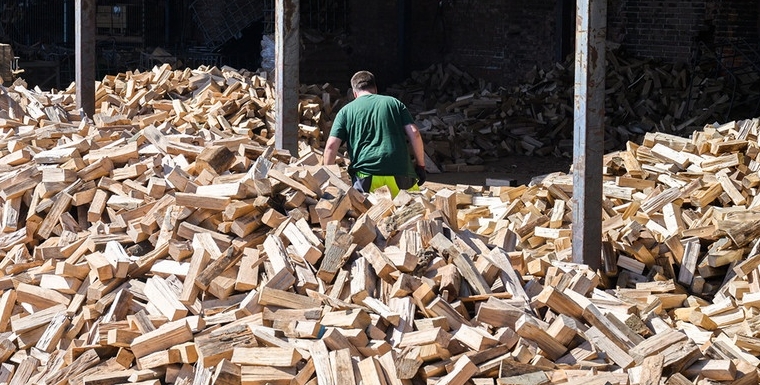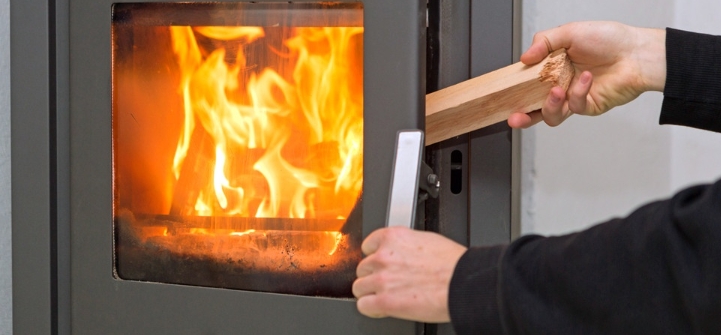According to the Federal Environment Ministry, heating with wood is not climate-neutral. Forest farmers are angry about this statement, environmentalists in turn about the promotion of wood heating.
Many people are currently looking for alternatives to gas and oil heating. For the Federal Environment Ministry, wood heating systems are not one of them. “Contrary to popular belief, heating with wood is not climate-neutral,” the ministry writes on its website, antagonizing forest farmers. The Association of Forest Owners finds the ministry’s position “not factual, not logical”.
Burning wood produces carbon dioxide (CO2) – even more per heat unit produced than with fossil fuels such as coal and gas, writes the Ministry of the Environment. That is why heating with wood is not climate-neutral. If you only look at the individual tree, that’s true, says Irene Seling from the Working Group of German Forest Owners’ Associations: “But that’s not the right perspective. We have to look at the entire area.”
A question of perspective?
Seling means the total area of the forest. The trees in the forests absorb as much or more than the amount of CO2 that is released in one year from burning wood. This means that heating with wood is climate-neutral, says Seling. The ministry finds this “simplifying”. This reasoning simply assumes that whatever CO2 the forest sequesters is automatically available to compensate for the “CO2 emissions of wood burning”. But the forest pulls CO2 out of the air one way or the other, regardless of whether wood is burned. From the Ministry’s point of view, this important function of the forest as a climate sink should be “better used to compensate for other, unavoidable CO2 emissions”.

Support for wood heating systems under criticism
Kenneth Richter from the German Nature Conservation Union agrees. It bothers him all the more that the federal government is still promoting new wood heating systems as an alternative to gas and oil. For him, this does not fit with the statements of the Ministry of the Environment. “If we actually produce as many emissions with wood heating as before or possibly even more than with fossils, then it makes no sense to continue promoting such a technology,” says Richter.Until recently, new wood heating systems, for example with wood pellets or wood chips , still funded with up to 45 percent. The federal government lowered that in the summer – to a maximum of 25 percent.
Julia Verlinden, deputy leader of the Greens in the Bundestag, thinks the position of the federal government is correct. Because “it is important that we get out of fossil fuels, that we replace oil heating or gas heating.” She sees wood heating as a building block when other options have been exhausted. Especially as hybrid heating, i.e. wood heating combined with solar thermal energy, heat pump or similar, wood can help “to switch to 100 percent renewable energies in the heating sector.”

Goal: 50 percent renewable heat by 2030
By 2030, the federal government has set itself the goal of generating 50 percent of the heat in a climate-neutral manner – that’s what the coalition agreement says. From the point of view of the Ministry of the Environment, which does not classify wood combustion as climate-neutral, wood energy should still be included in this target. However, it must be reassessed and realigned, the ministry said. The expansion of renewable heat is well behind electricity. In 2021, only 16.5 percent of heat came from renewable sources. Heating with wood is the mainstay with a share of 67 percent. The federal government is now relying heavily on heat pumps. How she wants to continue with wood energy in the future is currently being worked out – as part of a national biomass strategy.
Irene Seling from the Association of Forest Owners hopes that funding will not be further reduced. From their point of view, energy wood also helps to become less dependent on energy imports. In addition, it is a by-product that is automatically produced during timber harvesting and forest conversion and cannot be used in any other way. Environmentalist Kenneth Richter sees things differently. The leftover wood can be used for pressboard, paper or innovative biomass products, he says. The controversy over heating with wood continues.

